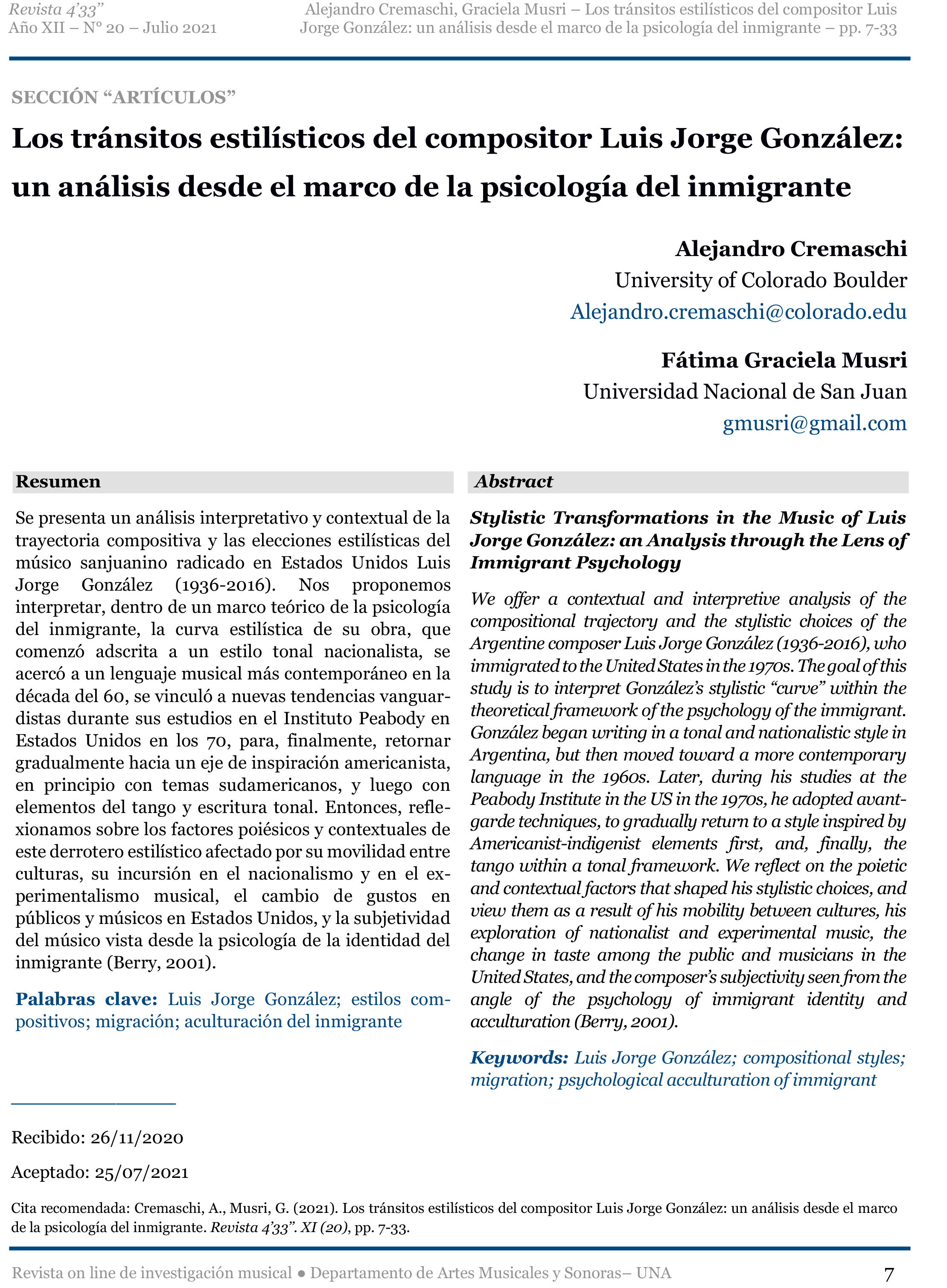Los tránsitos estilísticos del compositor Luis Jorge González: un análisis desde el marco de la psicología del inmigrante
Palabras clave:
Jorge Luis González, estilos compositivos, migración, aculturación del inmigrante, compositional styles, migration, psychological acculturation of immigrantResumen
Se presenta un análisis interpretativo y contextual de la trayectoria compositiva y las elecciones estilísticas del músico sanjuanino radicado en Estados Unidos Luis Jorge González (1936-2016). Nos proponemos interpretar, dentro de un marco teórico de la psicología del inmigrante, la curva estilística de su obra, que comenzó adscrita a un estilo tonal nacionalista, se acercó a un lenguaje musical más contemporáneo en la década del 60, se vinculó a nuevas tendencias vanguar-distas durante sus estudios en el Instituto Peabody en Estados Unidos en los 70, para, finalmente, retornar gradualmente hacia un eje de inspiración americanista, en principio con temas sudamericanos, y luego con elementos del tango y escritura tonal. Entonces, refle-xionamos sobre los factores poiésicos y contextuales de este derrotero estilístico afectado por su movilidad entre culturas, su incursión en el nacionalismo y en el ex-perimentalismo musical, el cambio de gustos en públicos y músicos en Estados Unidos, y la subjetividad del músico vista desde la psicología de la identidad del inmigrante (Berry, 2001).
ABSTRACT
Stylistic Transformations in the Music of Luis Jorge González: an Analysis through the Lens of Immigrant Psychology
We offer a contextual and interpretive analysis of the compositional trajectory and the stylistic choices of the Argentine composer Luis Jorge González (1936-2016), who immigrated to the United States in the 1970s. The goal of this study is to interpret González’s stylistic “curve” within the theoretical framework of the psychology of the immigrant. González began writing in a tonal and nationalistic style in Argentina, but then moved toward a more contemporary language in the 1960s. Later, during his studies at the Peabody Institute in the US in the 1970s, he adopted avant-garde techniques, to gradually return to a style inspired by Americanist-indigenist elements first, and, finally, the tango within a tonal framework. We reflect on the poietic and contextual factors that shaped his stylistic choices, and view them as a result of his mobility between cultures, his exploration of nationalist and experimental music, the change in taste among the public and musicians in the United States, and the composer’s subjectivity seen from the angle of the psychology of immigrant identity and acculturation (Berry, 2001).


